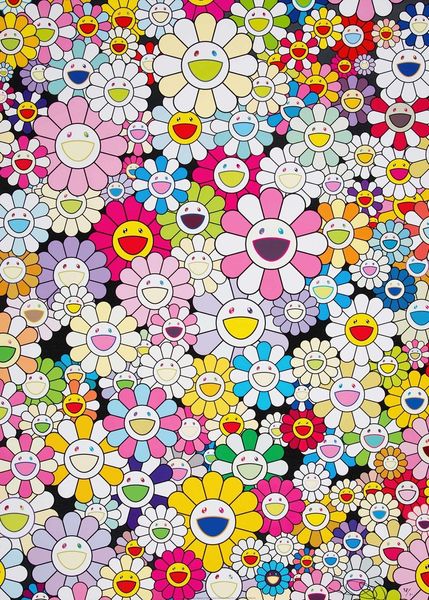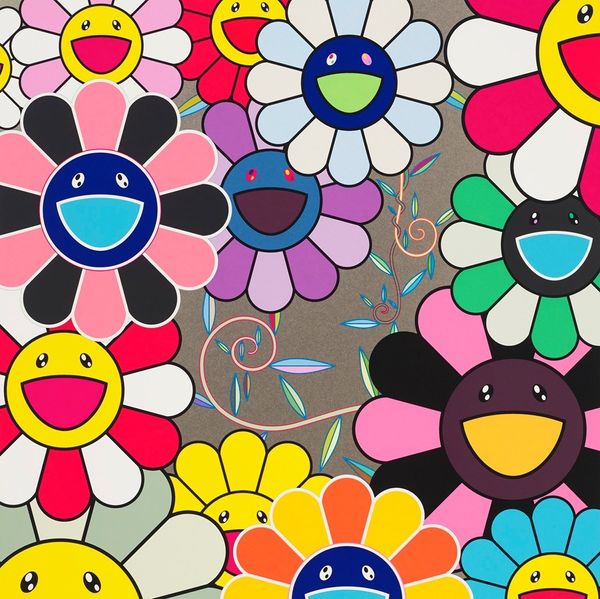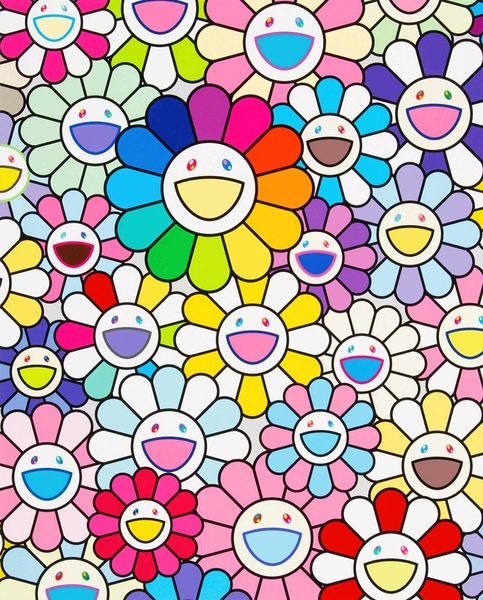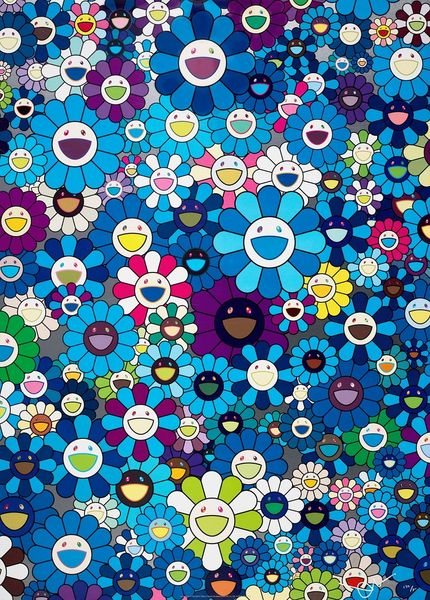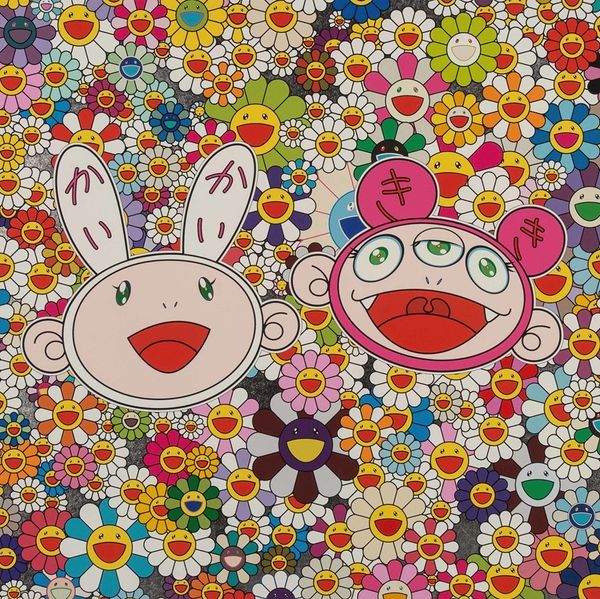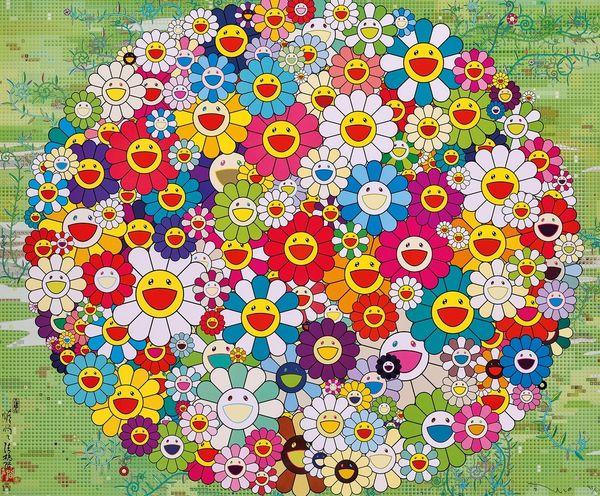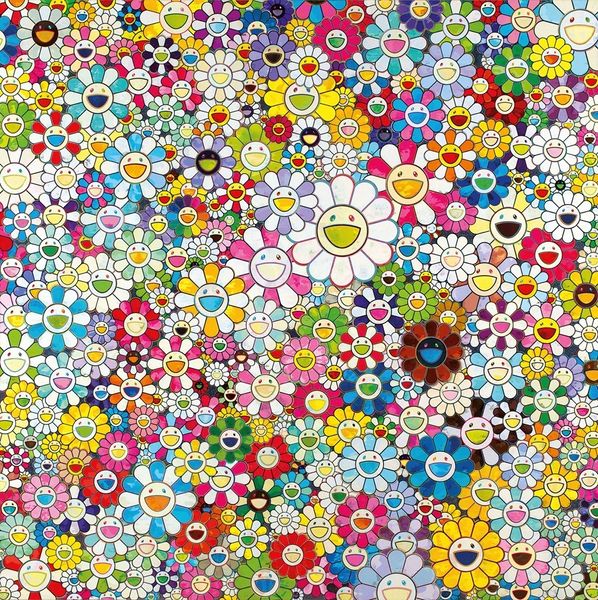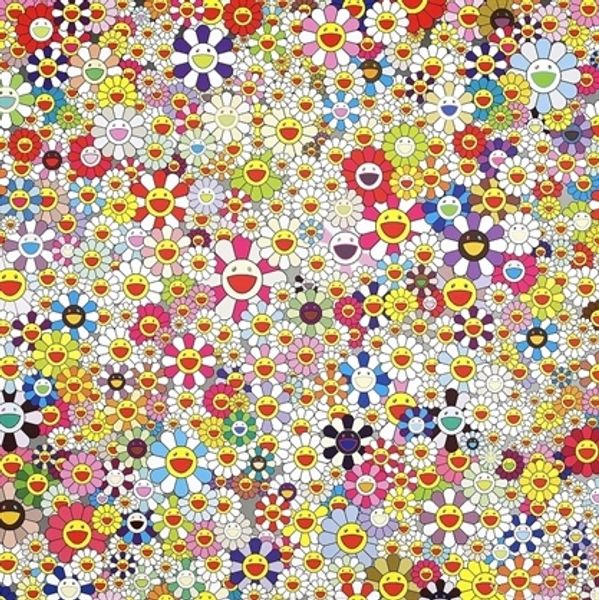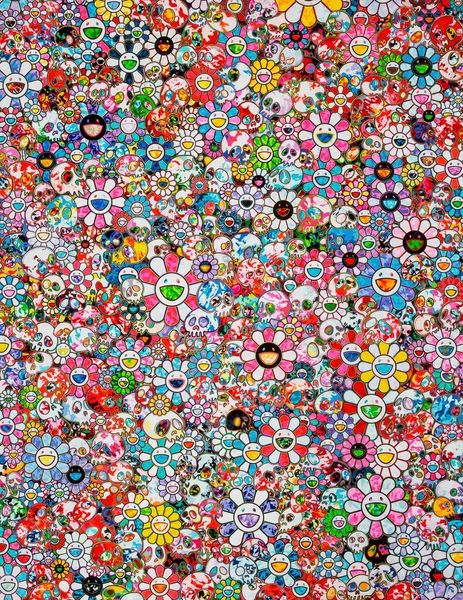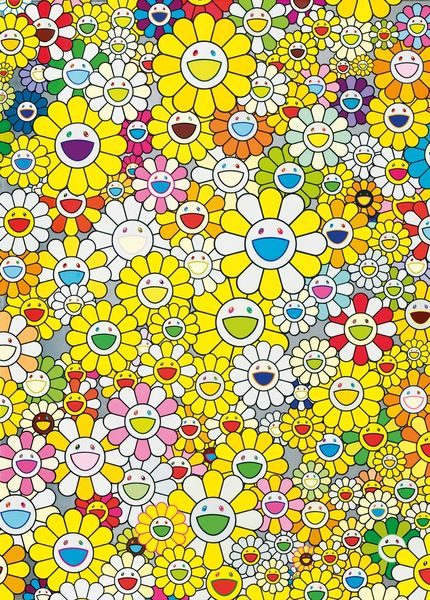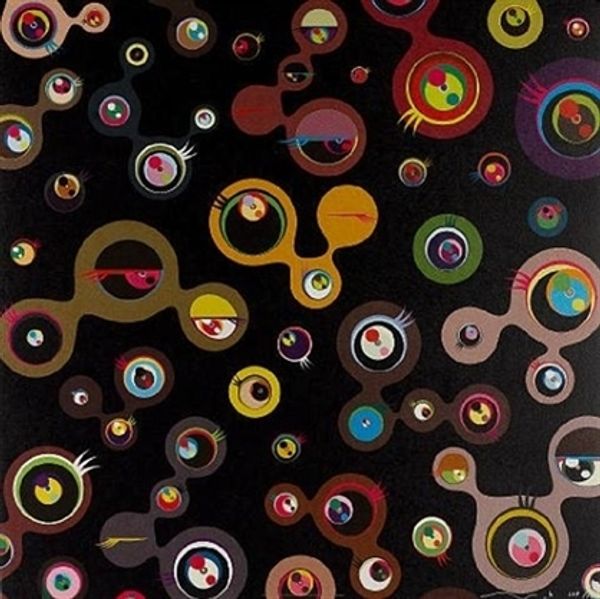
#
neo-pop
Copyright: Modern Artists: Artvee
Editor: We’re looking at Takashi Murakami’s "Flowers Blooming in This World and the Land of Nirvana," from 2013, made with acrylic paint. All these smiling flowers...it feels intensely cheerful, but also overwhelming in its repetition. How do you interpret this work, seeing it through a historical lens? Curator: That overwhelming cheerfulness is key. Think about the historical context: Murakami is working in post-bubble Japan, a period marked by economic stagnation and a kind of societal disillusionment after a period of extreme prosperity. How might this image speak to that? Editor: Perhaps as a kind of forced optimism, or maybe a pushback against that disillusionment? Is he commenting on consumer culture? Curator: Absolutely. Murakami is deeply engaged with the influence of anime and manga, and the commodification of cuteness, what he calls “kawaii.” But it's not simple celebration. This image pushes us to consider the packaging and selling of happiness itself. Where do we see echoes of this strategy in politics and other realms? Editor: So, these aren't just innocent flowers. They're symbols tied to socio-economic conditions. What about the “Land of Nirvana” part of the title? Curator: That layers in a spiritual dimension. Murakami’s work often blends pop culture with traditional Japanese art and religious imagery, prompting us to consider what happens when consumerism and spirituality collide. How do museums contribute to that dialogue? Editor: It’s fascinating to consider how art institutions elevate what might be seen as popular imagery. It changes our perspective on everything, really. Curator: Precisely. And that recontextualization, I think, is part of Murakami's intention all along. Editor: This really makes me see the work – and the museum’s role in presenting it – in a new way.
Comments
No comments
Be the first to comment and join the conversation on the ultimate creative platform.
